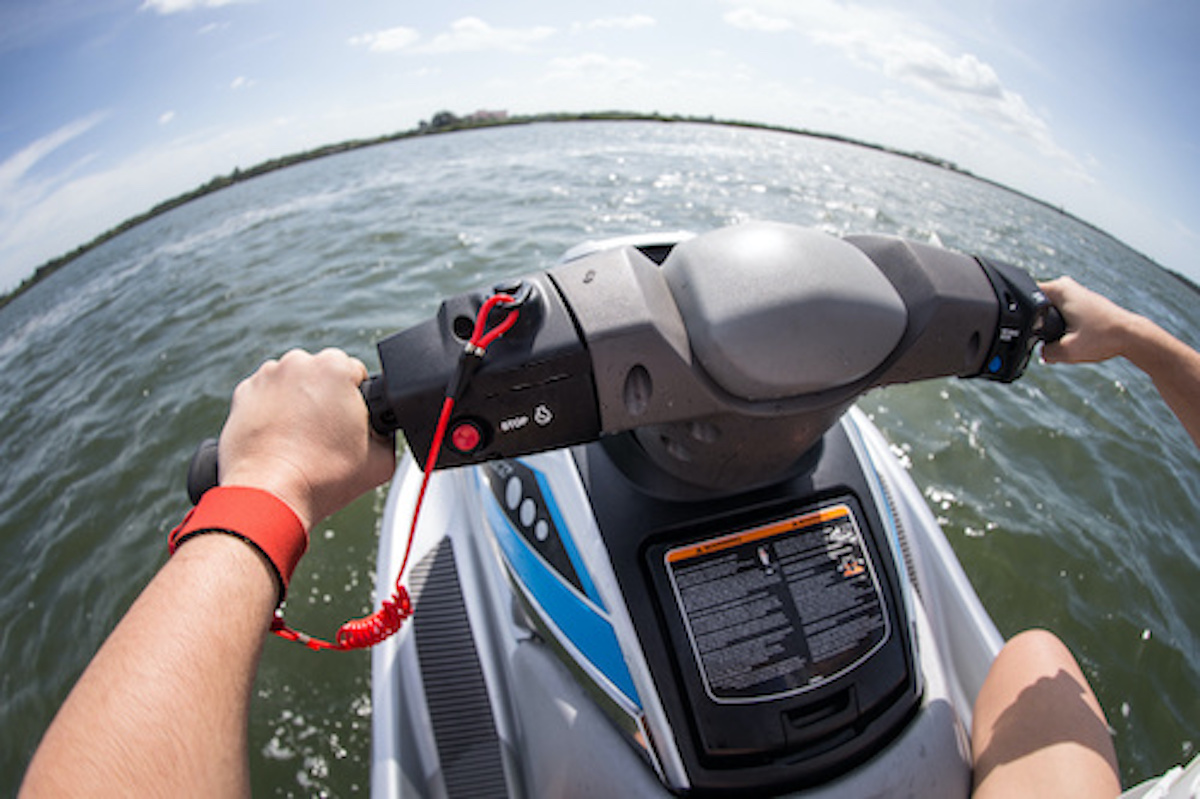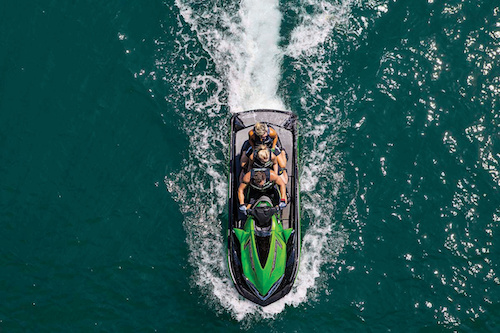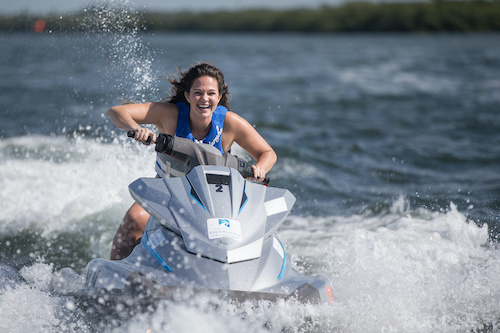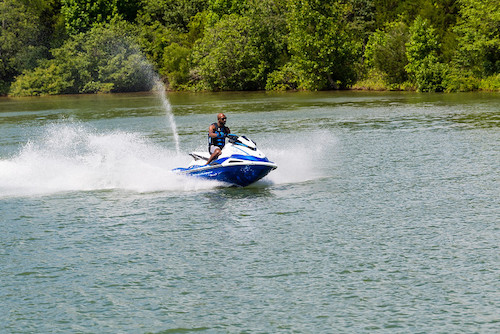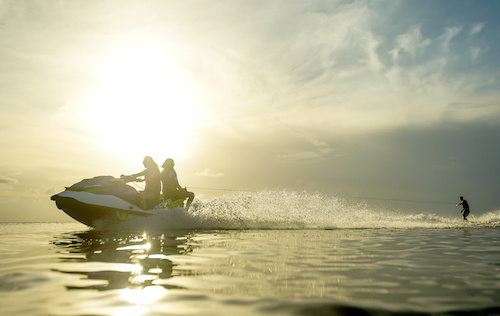Like any other boat, a personal watercraft (PWC) such as a BRP Sea-Doo, Yamaha WaveRunner or Kawasaki Jet Ski, requires some maintenance to keep it running reliably. The good news is that a PWC requires very little in the way of maintenance.
Here’s how to keep your PWC running strong season after season.
Explore All Personal Watercraft (PWC) Brands
1. Read Your Owner's Manual
Whether you own a Jet Ski, WaveRunner or Sea-Doo, the owner’s manual for your PWC will include the following:
- A maintenance schedule;
- Information on off-season storage;
- Details regarding engine flushing;
- And any specifications you’ll need to handle basic maintenance.
If you do not have a copy of the manual, one can often be downloaded for free from the manufacturer’s website, or a dealer can order you a paper copy.
2. Pay Special Attention During the "Break-In Period"
If you have a brand-new PWC, follow the owner’s manual instructions for engine break-in. The first few hours of operation are critical to the long life of the engine; this is when moving parts bed together.
During the break-in period, the manufacturer will advise not exceeding certain engine speeds, for example running no more than three-quarters throttle for the first 10 hours.
When that break-in period is complete, it’s a good idea to change the engine oil, which can collect a lot of contaminants as engine parts wear in. Some, but not all, manufacturers specify an oil change following break-in.
How to Drive a Personal Watercraft (PWC)
3. Personal Watercraft Pre-Ride Checklist
Before heading out on the water, remove the seat to gain access to the engine compartment and give your PWC a quick inspection.
- Check the engine oil level.
- On Sea-Doo models with a closed cooling system, check the level of coolant (anti-freeze) in the coolant expansion tank.
- Check for water in the bilge. If there’s a lot of water below the engine you could have a leak in a cooling hose or a fitting in the hull.
- Sniff for gas fumes. If you notice a strong fuel smell, you could have a leak in the fuel system, which of course could be very dangerous and requires your attention.
- Check the battery to make sure the cable connections are tight, and that the battery is secure in its mounting bracket.
- If you can, avoid using fuel containing ethanol in a PWC, as it attracts water. Never use fuel containing more than 10 percent ethanol (E10), which can cause engine damage and void the warranty. Add a marine fuel stabilizer additive at every fill-up, especially if the PWC sits for more than two weeks between rides.
4. Personal Watercraft Post-Ride Checklist
If you boat in salt water:
- You should flush the PWC engine and exhaust, following the instructions in the owner’s manual;
- Also rinse any salt mist from the engine compartment.
If you boat in fresh water and encounter a silty or sandy bottom, or you beached the PWC:
- It’s wise to flush the engine to clear debris from the cooling system.
How to Flush a Personal Watercraft (PWC) Engine
5. Annual Maintenance
Again, follow the maintenance schedule in the owner’s manual. You can either take care of annual maintenance on your own, or have it done by a dealer. Most key maintenance items need to be addressed at 100 hours or annually. If you live in a climate where the PWC will be stored for the winter, this annual maintenance is simply part of the long-term storage procedure.
Here are the essential items:
Change the Oil
Current PWC owner’s manuals do not give instructions on how to change the oil, and direct the owner to a dealer for this service. You can do it yourself, but you’ll need to acquire an extractor pump to suck the old oil out of the engine, as you can’t drain the oil out the bottom of the engine.
The PWC manufacturers sell oil change kits that include the pump—which you can use over and over—plus oil and an oil filter. You should also pick up an oil filter wrench, which will make it much easier to remove the filter.
It is very important to change the oil before off-season storage, as that old oil is full of corrosive contaminants that should not be left in the engine for months. Also dispose of the old oil properly.
Fully Inspect the PWC
Inspect your watercraft per the owner’s manual. Depending on the model, there are some rubber boots, hoses, engine mounts, battery bracket, and steering and shift linkage bushings that should be inspected for wear.
Per the owner’s manual, lubricate steering and shift linkage with marine grease.
Check Your Batteries
Marine batteries have a life span of five to seven years. If your PWC battery is nearing replacement age, consider replacing it before it goes dead and ruins a day on the water.
Marine Batteries: Types, Wiring, Charging & Set Up
6. Off-Season Personal Watercraft Storage
Following the owner’s manual instructions for long-term storage will ensure your PWC is ready to ride in the spring. Most PWC dealers will offer an off-season storage service package.
- You want to store the PWC will a full tank of fresh fuel that has been treated with a marine fuel stabilizer. If it’s available, fill the tank with ethanol-free gas. Follow the instructions on the fuel stabilizer bottle. Marine stabilizer can be purchased from the PWC dealer. Ideally you’ll fill the tank with fresh gas, treat it with stabilizer, and then drive the PWC for about 10 minutes to get the stabilized fuel into the engine.
- Flush the engine cooling system and exhaust. On some PWC you should purge all water from the exhaust using compressed air (per the owner’s manual). Water remaining in the exhaust can freeze and cause damage.
- Change the oil and oil filter.
- Change the fuel filter per the owner’s manual.
- Per the owner’s manual, remove the spark plugs and add the specified oil to each cylinder to prevent corrosion inside the engine.
- Inspect the sacrificial anodes, which protect the pump system from galvanic corrosion, and replace them if they are more than 50 percent worn.
- Per the owner’s manual, lubricate steering and shift linkage with marine grease.
- Remove the battery, make sure it is fully charged, and store it in a cool, dry place. Storing the battery on a battery tender will keep it fully charged for the off-season.
Read Next: The Ultimate Personal Watercraft (PWC) Safety Guide
You May Also Like:
